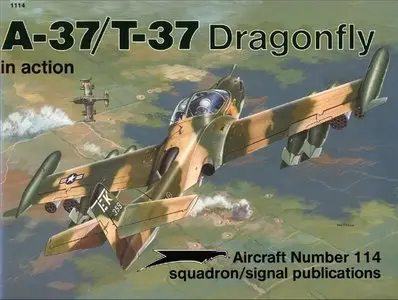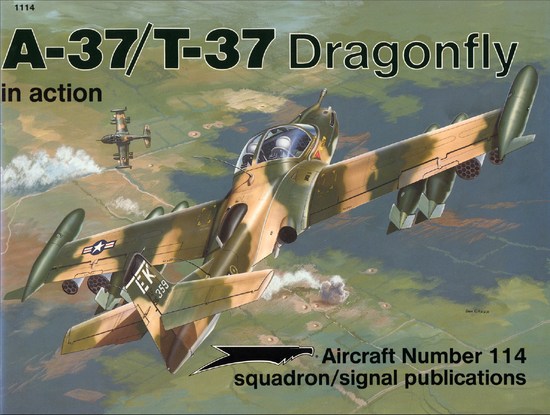A-37/T-37 Dragonfly in Action (Aircraft 114) By Terry Love
Publisher: Squadron/Signal Publications Inc. 1991 | 50 Pages | ISBN: 089747239X | PDF | 29 MB
Publisher: Squadron/Signal Publications Inc. 1991 | 50 Pages | ISBN: 089747239X | PDF | 29 MB
One of the more neglected areas of aviation history has been the history of training and light attack aircraft. Numerous aircraft, such as the T-6 and T-28, that were designed for pilot instruction were built with armament and were used as light attack aircraft. What makes the Cessna T/A-37 stand out from all the rest is that it is still the front line basic jet trainer for the USAF and numerous other foreign air forces. Additionally, there are plans to refurbish the aircraft to give it another twenty years of service. The biggest factor to success in combat is quality training. This has been proven time and time again in the skies over Europe, Korea, Vietnam and the Persian Gulf— training is the key to victory. To start pilots out on the proper course in their training, the selection of a good basic trainer is of vital importance. The Cessna Aircraft Company of Wichita, Kansas, has a well deserved reputation as a designer and builder of outstanding light aircraft for utility, transport, and observation. The company gained some military experience during the Second World War II when they built the Cessna UC-78 Bobcat and followed this aircraft with the Cessna L-19/0-1 Bird Dog series of light observation aircraft. When the Air Force issued its Requests For Proposals (RFPs) during the early 1950s for a basic jet trainer, Cessna responded. The USAF issued the full specification for the TX (Trainer Experimental) project on 15 April 1952. Some of the requirements were: an empty weight of4,000 pounds (in order to limit costs and complexity), an ability to perform twenty takeoffs and landings within a two hour period, handling characteristics matched to those of a modern jet fighter, a 35,000 foot ceiling, sufficient high altitude maneuverability for student orientation, a maximum traffic pattern speed of 113 knots and good low speed handling characteristics.



